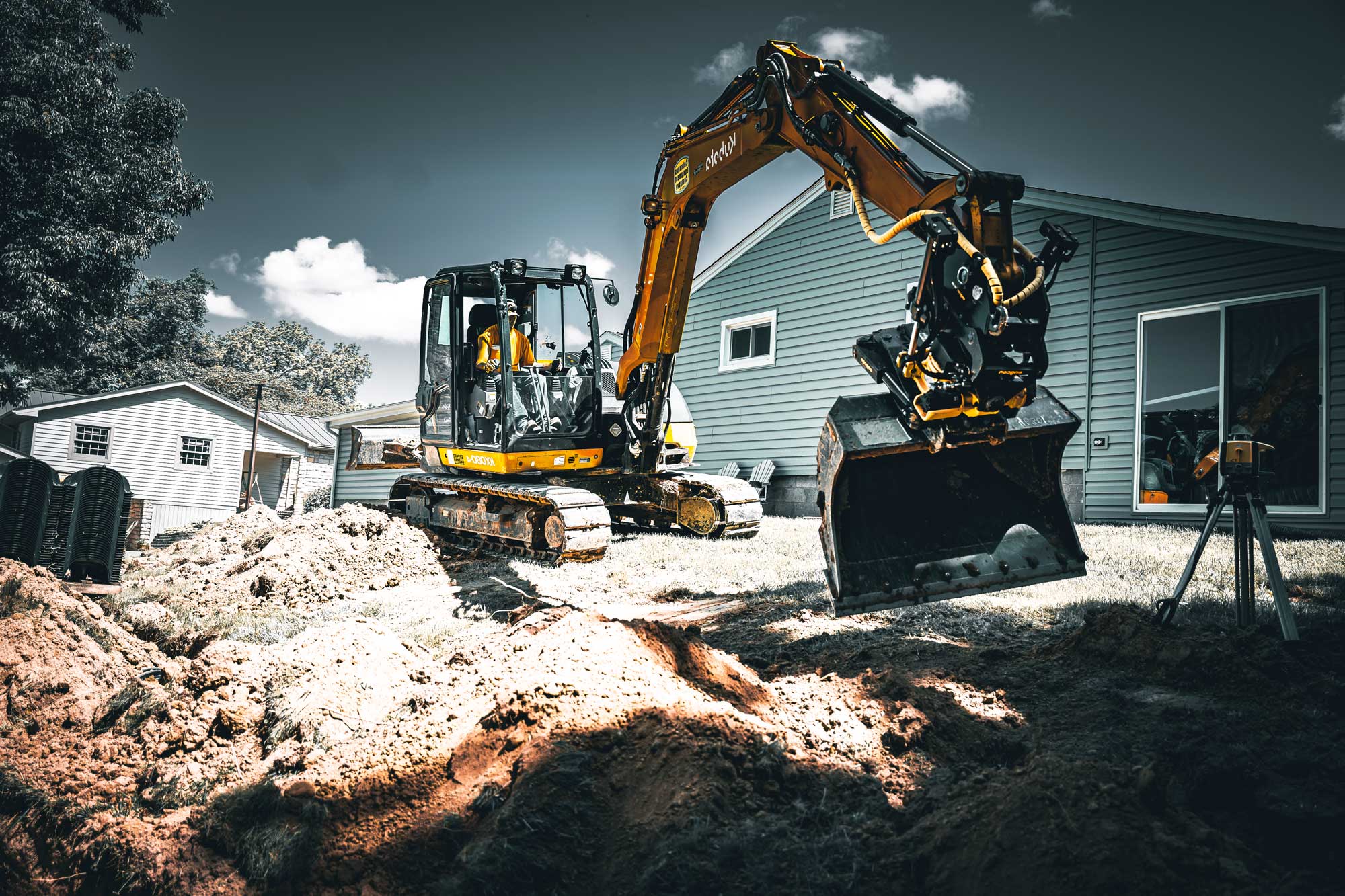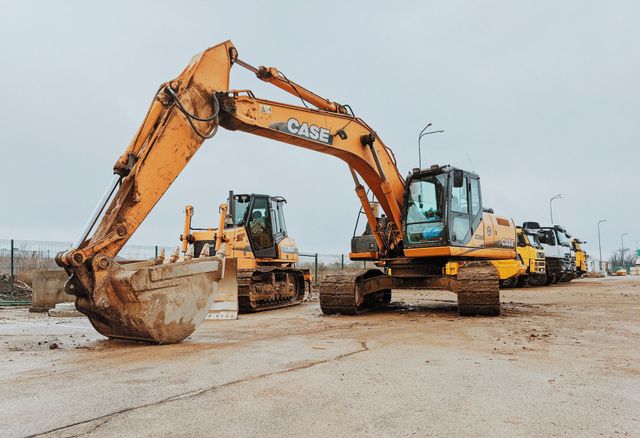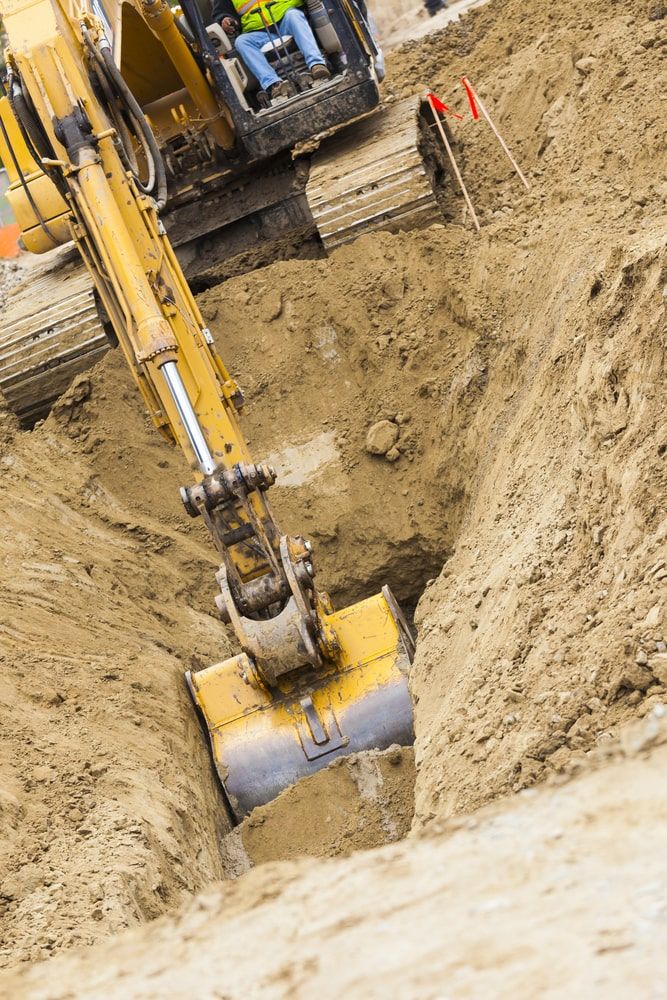Excavating Ohio - Leading Excavation Service Providers for Ohio Projects
Excavating Ohio - Leading Excavation Service Providers for Ohio Projects
Blog Article
In-Depth Exploration: The Scientific Research Behind Superior Excavation Practices
The world of excavation practices is a domain name where scientific research links with craftsmanship to unearth the mysteries concealed underneath the planet's surface. From ancient hand tools to modern-day hydraulic excavators, the evolution of excavation techniques has been a testimony to human resourcefulness and technical advancements. What really establishes superior excavation methods apart is a deep understanding of geological principles, coupled with the usage of cutting-edge tools and approaches. By checking out the science behind these practices, we can discover the secrets that lie beneath our feet and appreciate the accuracy and experience that enter into every dig.
Development of Excavation Techniques
Throughout background, the evolution of excavation methods has actually played a vital duty beforehand building methods and archaeological explorations. From the simple tools used by our ancestors to the sophisticated equipment employed in modern-day times, the progression of excavation methods has considerably transformed how we come close to various tasks.
In old times, manual labor with fundamental tools such as shovels, pickaxes, and wheelbarrows was the main method of excavation. This labor-intensive procedure limited the depth and extent of excavations, usually resulting in slow-moving progression and limited accessibility to certain websites. As people progressed, so did the devices and strategies used for excavation.
The Industrial Transformation noted a transforming factor in excavation practices with the intro of steam-powered machinery. In contemporary times, modern technology plays a critical function in excavation, with developments like GPS systems, drones, and 3D scanning boosting accuracy and effectiveness in the field.
Duty of Technology in Excavation

The combination of sophisticated innovation has essentially changed the field of excavation, enhancing precision and effectiveness to extraordinary degrees. One of the key technological developments that has significantly impacted excavation techniques is the utilization of general practitioner systems. These systems permit precise mapping of excavation sites, making it possible for operators to properly situate below ground utilities and frameworks. Furthermore, using telematics in excavation devices has actually allowed real-time monitoring of equipment efficiency, leading to aggressive upkeep and increased functional efficiency.
Furthermore, the introduction of 3D modeling and simulation software application has streamlined the preparation process for excavation jobs. Operators and designers can currently imagine the whole excavation procedure before beginning, identifying potential obstacles and maximizing operations. In combination with this, the implementation of drones in excavation activities has actually helped with airborne surveys, volumetric measurements, and site examinations with unmatched rate and precision.
Geological Concepts in Excavation
An understanding of geological principles is necessary for making certain the structural integrity and stability of excavation websites. Geological elements play a crucial function in establishing the expediency and safety of excavation tasks (septic ohio). One vital geological principle to take into consideration is the type of dirt or rock present at the website. Various soil types, such as clay, sand, or gravel, have varying learn the facts here now levels of security and call for different excavation strategies. Cohesive soils like clay might require additional support to avoid collapses, while sandy soils might be vulnerable to erosion during excavation.
In addition, the geological structure of the area, consisting of faults, fractures, and rock formations, need to be very carefully analyzed to determine potential dangers and obstacles. Digging deep into near geological fault or unpredictable rock developments can result in instability pop over to this web-site and prospective hazards. By carrying out comprehensive geological surveys and evaluation, excavators and designers can create techniques to minimize risks and make certain the successful conclusion of excavation jobs. Ultimately, integrating geological principles right into excavation methods is vital for achieving secure, efficient, and lasting results.

Most Recent Tools for Excavation
In the realm of excavation practices, contemporary advancements in tools have actually transformed the effectiveness and precision of excavation processes. These drones can offer detailed aerial surveys of excavation websites, supplying real-time information on topography and prospective risks.
Another cutting-edge tool acquiring popularity is the application of 3D printing innovation for producing custom excavation equipment. This allows for the manufacturing of specialized tools that are tailored to the certain needs of a task, increasing effectiveness and decreasing downtime.
Furthermore, innovations in materials scientific research have led to the advancement of more powerful and much more sturdy excavation devices. dump truck companies in ohio. Tungsten carbide-tipped excavator add-ons, for instance, offer exceptional efficiency in tough ground conditions, enhancing efficiency on-site
Scientific research's Influence on Excavation Practices

Additionally, innovations in products scientific research have actually led to the creation of more powerful, much more long lasting excavation tools and tools. For example, the use of composite products in diggers and shovels has actually enhanced their efficiency and durability, ultimately increasing performance on excavation websites. In addition, clinical research study on soil mechanics and geotechnical engineering has provided important insights right into dirt habits, enabling excavation professionals to make informed decisions pertaining to excavation approaches and dirt stabilization methods. In general, science continues to drive advancement and enhancement in excavation methods, making excavation projects extra efficient, economical, site link and sustainable.

Final Thought
Finally, the evolution of excavation methods has been greatly influenced by developments in technology and a deeper understanding of geological principles. The most recent tools and equipment utilized in excavation have actually enhanced performance and precision in the area. The application of clinical understanding has substantially enhanced excavation methods, leading to more lasting and reliable techniques for excavating various sorts of products.
In the world of excavation practices, modern innovations in tools have reinvented the efficiency and accuracy of excavation processes. By leveraging clinical principles, the excavation market has been able to significantly enhance performance, accuracy, and security in excavation processes. GPR allows excavation teams to non-invasively scan and map subsurface frameworks, utilities, and potential dangers, allowing them to intend excavation jobs with better accuracy and lowered danger of mishaps.
Additionally, clinical study on dirt auto mechanics and geotechnical design has actually supplied useful understandings into soil behavior, allowing excavation specialists to make enlightened decisions concerning excavation approaches and soil stablizing strategies. In general, science continues to drive advancement and improvement in excavation practices, making excavation projects more effective, cost-effective, and lasting.
Report this page